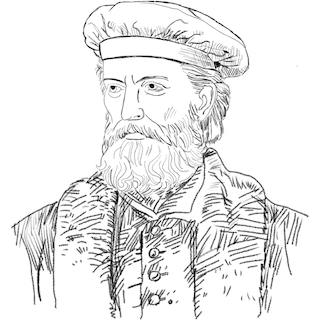Nestled within Indonesia's boundaries is Wallacea, a unique region of approximately 338,000 square kilometers named after British naturalist Alfred Russel Wallace. Home to the world's most diverse and distinctive species like the Komodo dragon and the purple-bearded bee-eater, this region is a living testament to Earth's evolutionary history. However, as we approach Wallace's 200th birth anniversary in 2023, Wallacea's rich biodiversity faces significant threats from human activities.
Over the past forty years, Wallacea's lush ecosystems, from its verdant forests to its vibrant reefs, have been under increasing pressure from mining, agriculture, and infrastructure development. Between 2000 and 2017, Sulawesi, one of the region's primary islands, lost approximately 10.89% of its forests, equivalent to an alarming 2.07 million hectares. West Sulawesi and Southeast Sulawesi were the most affected, with forest cover losses of 13.41% and 13.37% respectively.
This deforestation is largely attributed to companies clearing land for palm oil, cocoa, and chocolate plantations, particularly over the last decade. Furthermore, the region's soil houses the world's largest nickel reserve, a crucial element in electric vehicle batteries, exacerbating the deforestation issue due to mining activities.
However, the damage extends beyond terrestrial ecosystems. Wallacea's reefs, globally renowned for their diversity and beauty, have experienced severe damage from overfishing and destructive practices. These reefs not only attract tourists but also play a crucial role in the local economy, making their degradation a significant concern for local communities.
The region's avian and primate populations are also in decline due to deforestation, with bird species diversity dwindling and monkey and tarsier populations nearing extinction. Despite the grim scenario, hope persists.
In mid-August 2023, the Wallacea Science Symposium is set to occur in Makassar, South Sulawesi Province. This event aims to spotlight the region's distinctiveness and foster strategic planning for sustainable development. It calls upon various stakeholders, including the Indonesian government, scientists, mining and plantation companies, tourism industries, and local communities, to collaborate for Wallacea's future.
However, the responsibility extends beyond these stakeholders. Everyone can contribute to conservation efforts - from donating to organizations working to protect the region, reducing our carbon footprints through renewable energy and reduced fossil fuel use, to supporting sustainable tourism.
As we approach the bicentennial of Alfred Russel Wallace, the naturalist who illuminated Wallacea's unique biodiversity to the world, it's crucial to remember that our efforts are not only about preserving the past. They are centered on ensuring a future where Wallacea's unique species continue to thrive, and a rich, diverse, and vibrant Wallacea can be passed on to future generations.
READ MORE
